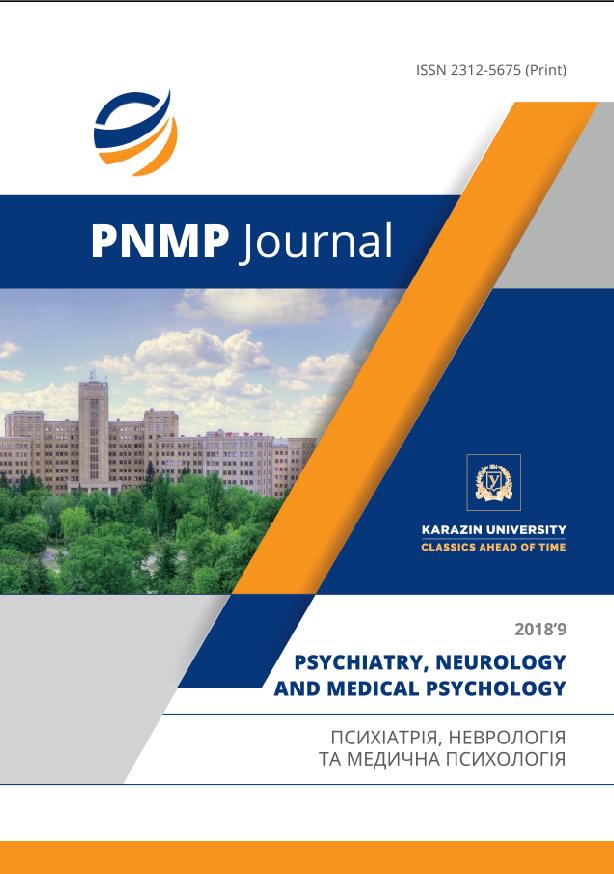FEATURES OF SOCIO-PSYCHOLOGICAL ADAPTATION IN REPRESENTATIVES OF YOUTH SUBCULTURES.
Abstract
In order to analyze the characteristics of the manifestations and mechanisms of the formation of socio-psychological adaptation / maladaptation among representatives of youth subcultures, as one of the criteria of their psychological health, to determine the need to provide them with psychological assistance, 143 adolescents were examined. Among them: 93 representatives of youth subcultures (the main group of the study) and 50 ordinary teenagers (comparison group). Taking into account current trends in the prevalence of youth subcultures, the study included representatives of two trends: 45 people - the so-called extremes (supporters of the search for new physical sensations based on motor activity - rofer, scooters, skaters) and 48 people - the so-called gamers (supporters of cyberspace, realizing themselves in the field of computer technology, mainly in online games). To achieve the main goal of the work, a number of modern psychodiagnostic methods of the research were applied: - to determine the basic indicator of the level of socio-psychological adaptation; - methods for diagnosing socio-psychological adaptation by K. Rogers, R. Daimon; - methods for diagnosing the degree of immersion in the subculture - COMP-UDIT; -methods for understanding the psychogenesis of pathological enthusiasm for the subject of the subculture, applied a test for determining the level of suggestibility by A. P. Eliseev. On the basis of interdisciplinary generalizations, psychological mechanisms of personality socialization which, in the author’s opinion, are the object of identification, as well as one of the stages of personality autonomization were conceptualizaed. The results of an empirical study on 6 samples of subjects are analyzed in accordance with the degree of their socio-psychological adaptability and belonging to a particular subculture. trends of psychological maladjustment. Among representatives of youth subcultures there are both adapted faces and manifestations of social psychological Coy maladjustment. The complex of vulnerability to maladjustment in the subcultural space is defined, which is formed, in fact, by the indicators of socio-psychological adaptation, indicators of the degree of personality submergence in the subcultural space, and indicators of personality suggestibility.
Downloads
References
Алексєєва Т. В. Молодіжні субкультури: розбіжності у світогляді і способі життя / Т. В. Алексєєва, В. Є. Луньов // Девіантологія: у 2-х ч.: навч. посіб. для студ. вищ. закл. освіти. – К., 2018. – Ч. 1. – 674 с.
Nwalozie C. J. Rethinking Subculture and Subcultural Theory in the Study of Youth Crime – A Theoretical Discourse / C. J. Nwalozie // J. of Theoretical and Philosophical Criminology. – 2015. – Vol. 7 (1). – P. 1–16.
King A. The Jack Wills crowd: towards a sociology of an elite subculture / A. King, D. Smith // Br. J. Sociol. – 2018. – Vol. 69 (1). – P. 44–66/
Dekel О. Youth Subcultural Theory: Making Space for a New Perspective (chapter 16)/Young Consumer Behaviour: A Research Companion; Ed. By A. Gbadamosi / О. Dekel, L. Dempsey, E. Moorlock. – London, 2017. – 19 p.
Hodkinson P. Youth cultures and the rest of life: subcultures, post-subcultures and beyond / P. Hodkinson // J. of Youth Studies. – 2016. – Vol. 19 (5). – P. 629–645.
Ulusoy E. Toward a theory of subcultural mosaic: Fragmentation into and within subcultures / E. Ulusoy, A. F. Firat // J. of Consumer Culture. – 2016. – Vol. 0 (0). – P. 1–22.
Hollingworth S. Performances of social class, race and gender through youth subculture: Putting structure back in to youth subcultural studies / S. Hollingworth // J. of Youth Studies. – 2015. – Vol. 18 (10). – P. 1237–1256. – doi:10.1080/13676261.2015.1039968
Naterer A. Violence and the code of the street: a study of social dynamics among street children in Makeevka, East Ukraine / A. Naterer // J. Interpers Violence. – 2015. – Vol. 30 (8). – P. 1387–1402. – doi: 10.1177/0886260514540323.
Woodman D. Researching Ordinary Young People in a Changing World: The Sociology of Generations and the Missing Middle in Youth Research / D. Woodman // Sociological Research Online. – 2013. – Vol. 18 (1). – P. 7.
Линский И. В. Метод комплексной оценки аддиктивного статуса индивида и популяции с помощью системы AUDIT-подобных тестов / И. В. Линский, А. И. Минко, А. Ф. Артемчук // Вісн. психіатрії та психофармакотерапії. – 2009. – № 2 (16). – С. 56–70.
Практическая психодиагностика (методики и тесты); под ред. Д. Я. Райгородского. – Самара: Бахрах, 1999. – 672 с.
Елисеев О. П. Конструктивная типология и психодиагностика личности / О. П. Елисеев. – Псков, 1994. – С. 72–75.

